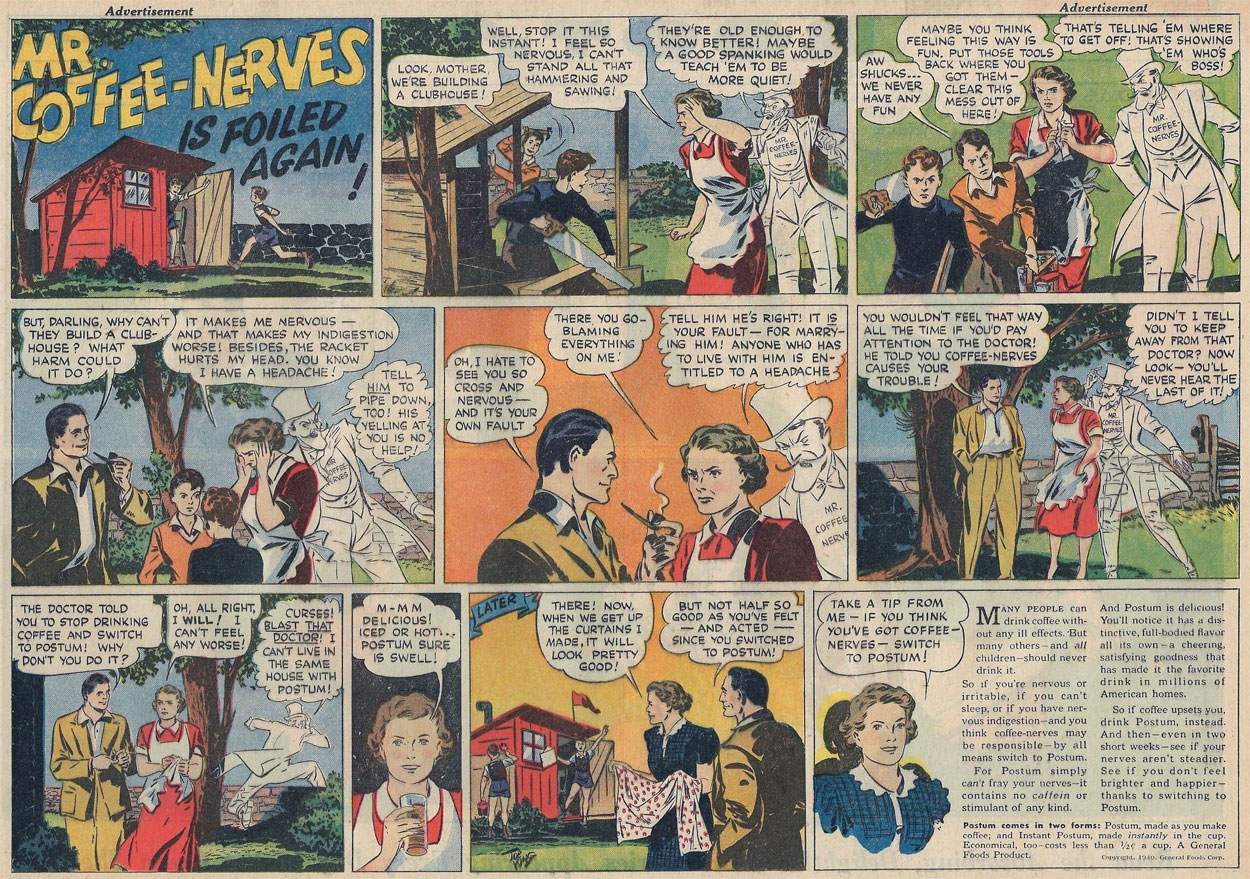Joe King was an American cartoonist, illustrator and newspaper photographer, who worked in comics during the 1920s and 1930s. He was a staff artist with the Newspaper Enterprise Association, and drew their syndicated features 'Radiomania' (late 1920s), 'The Tinymites' (1930-1932) and 'The Clownies' (1931-1933). Later in life he was a book illustrator, using the pen name Joel King. He should not be confused with late 20th-century, early 21st-century U.S. comic artist Joe King (born in 1958).
Early life
Joseph B. King was born in 1904 in Newark, New Jersey. His father Clifford was a hotel waiter. The King family later resided in Los Angeles, California, before settling in Canton, Ohio. During his high school years, King already showed artistic talent, winning a poster contest at McKinley High School in April 1923.
From: The Waco News Tribune (10 March 1926).
Early art career
Upon graduation, King became a photographer with The Canton Repository in the period 1924-1925, before turning to illustrating and cartooning. One of his first jobs was making the illustrations for Barbara Webb Bourjaily's children's book 'Mother Goose Secrets' (Small, Maynard & Company, 1925). It contained popular fairy tales and lullabies as the author told them to her three boys, turning the fear and terror of the original stories into joy. Between 1926 and 1927, King illustrated the newspaper column 'What Does Your Child Want to Know?' for the Bell Syndicate. It answered questions sent in by parents. The writers were C.E. Brown and, again, Barbara Bourjaily. By the end of the decade he also sold syndicated daily single-panel cartoons to newspapers.
Newspaper Enterprise Association
By 1927, Joe King was affiliated with the Newspaper Enterprise Association (NEA). One of his first jobs was a new cartoon feature which the syndicate could offer the newspaper to print on their radio page. 'Radiotics' (renamed to 'Radiomania' in 1928) replaced the NEA's previous radio strip 'Bugs' (1924-1927), drawn in its final days by Don Wootton. Whereas 'Bugs' was a comic strip with a recurring character who builds and tunes radios, 'Radiotics' was a single panel cartoon with a broader outlook on the radio themes. Later on, the feature also had sequential installments. King left in April 1929, and was replaced in succession by Art Krenz, Dorothy Urfer, Charles Okerbloom and George Scarbo, who continued it until February 1932.
'The Tinymites' (Dayton Daily News, 21 February 1932).
The Tinymites
Joe King's main work for the NEA was illustrating 'The Tinymites', a daily picture story written in rhyme by art director Hal Cochran. King came on board in February 1930, after the previous artist Irving Knickerbocker died in a car accident. 'The Tinymites' was mainly an illustrated text story about a group of kids who engage in all kinds of magical adventures. Their names refer to their respective roles or appearances. Clowny is a clown, Scouty a boy scout, Coppy "plays" a cop, and Dotty wears a dotted dress, etc. Readers were encouraged to read the story and then color the picture. King and writer Cochran also originated a Sunday page with the same characters, which was more richly illustrated and had a sequential narrative. However, it appeared under the title 'The Clownies', starting in 1931. King also added two companion features with funny animal humor, called 'Animal Cracks' (7 July 1932 - April 1933) and 'Comic Zoo' (11 September 1932 - 12 March 1933). By April 1933, George Scarbo took over King's entire workload on these features.
'Gabby' (The Brooklyn Times Union, 21 August 1935)
Final comics work
During the mid-1930s, Joe King's work only appeared in a handful of other newspaper comics. Between 29 July and 26 October 1935, he drew the dramatic daily adventure strip about high school sports hero 'Gabby' for the Central Press Association. The writer was William Ritt, who was also writing the far more popular sci-fi serial 'Brick Bradford' for Clarence Gray. Between February and April 1936, King also drew a couple of Sunday pages of 'Ted Towers Animal Master' by Frank Buck for King Features Syndicate, briefly replacing the original artist Glen Cravath before Ed Stevenson became the new regular artist. These excursions marked the end of Joe King's career in syndicated cartooning.
'Mr. Coffee-Nerves Is Foiled Again!', signed by Joe King (9 June 1940).
Commercial artist
King turned to commercial art and illustration, doing work for magazines like Ladies Home Journal, Look Magazine and Women's Home Companion. During the early 1940s, King was doing work for the advertising agency Johnstone and Cushing. There, he was one of the artist drawing 'Mr. Coffee Nerves' advertising strips for the coffee substitute Postum by General Foods. Each episode featured a villainous ghost who personified caffeine headaches. His devastating effect on people's lives was however diminished when his victims drank Postum and were cured. King drew his 'Mr. Coffee Nerves' installments in alternation with Paul Arthur (a joint pen name for Milton Caniff and Noel Sickles). Other artists for the feature were Lou Fine and Albert Dorne.
He later returned to illustrating books, by then using the pen name Joel King. Among the books illustrated by King are 'Nip Ahoy, the Picture Bar Guide' by Richard H. Loeb, Jr. (Wilcox & Follett Co., 1954), 'The Missing Mitt' by Edna Walker Chandler (Ginn & Co, 1955) and 'Leave It to Herbert the Electrical Mouse' by Marie Bloch (TAB Books, 1958).
Death
Since 31 August 1935, Joe King had been married to fellow cartoonist Dorothy Urfer, and the couple lived in Weston, Connecticut and eventually in New York City. Joseph King passed away on 24 January 1980 at the age of 75.
Illustration from 'Mother Goose Secrets'. More illustrations from this book can be found at Chris Otto's Papergreat blog.








